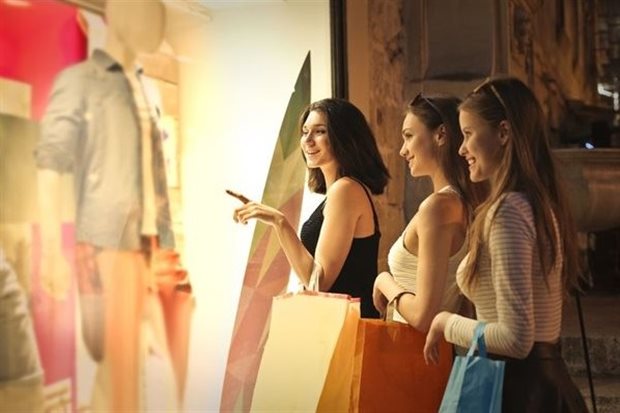
Top stories






More news






HR & Management
Kickstart your career: 7 steps to get job-ready in 2026








Other terms used to describe retailtainment are 'inspirational retailing' or 'entertailing'. I’ve seen three particular retailtainment trends cropping up – using either one or a combination of ambiance, emotion, sound and activity.
"To feel familiar I'm not going to put a nine-foot screen in there, I want her to feel like she's at home trying on clothes with her best friend." Caroline Brown, director of experiential design at M.M.LaFleur
Retailtainment doesn’t need to involve the latest high tech gadgetry; a sale can still happen in an inviting analog (non-tech) environment, using skilled sales people. With these elements in place, we’ve already ticked the retailtainment boxes of ambiance and emotion.
To a certain extent, it is a design misconception that retailers need virtual reality, robotics, etc., to create a memorable retailtainment experience; it is very much dependent on product and situation. This is particularly relevant to South Africa where just getting great customer service right could be a quick win for many brands, particularly for those without the funds to revamp their stores with new technology. As Jared Hauser from Valence Insights says about retail sales, “the means of implementation have changed, but the concept of curated experiences is as old as retail itself.”
Hauser also talks about using the drawcard of nostalgia as a means of capturing the customer’s imagination. This includes things like the retro appeal of vinyl, revival of Polaroid, desire for sustainable couture-crafted products and artisanal food. In the local pharmaceutical industry we still rely on dynamic sales reps to help get products to market, this in itself could be defined as an analog retailtainment experience as it is certainly an activity which gets our customers interested in purchasing a product.
An example of a brand not using tech for tech's sake is the US women’s work clothing brand M.M.LaFleur. Their retail strategy is to take the angst out of dressing for work with a direct-to-consumer model, focusing on simplicity using personal stylists, giving bespoke service. They believe the human element of good service is vital to their target market and intentionally keeps tech out of its showrooms.

They seem to be onto a good thing, as the founder and CEO of M.M.LaFleur says, “The concept of personal styling for women with better things to do than shop, has found a following: Sales are 50 times what they were five years ago.”
"If you want people to know who you are you have to do something different, and that's not cheap." Almira Cuizon, vice president of retail operations at Roots
This is largely where the thrill of retailtainment lives, the sense that we’re shopping in a science fiction landscape. But we’re not seeing huge retail tech experiences in South Africa yet. Technology is pricey and needs to be updated more than every five years and our retail sector is not in a positive growth space. But enough about us, here are a couple of international brands doing interesting things.
Farfetch's Store of the Future is touted as an augmented retail solution which "links the online and offline worlds, using data to enhance the retail experience". This includes having connected clothing racks, touch-screen-enhanced mirrors where you can request different sizes, customised order taking, sign-in stations with purchase history, as well as the technology to pay for your shopping without actually leaving the dressing room.
Recently Farfetch has unveiled a “new content experience” allowing customers to shop “selects and edits chosen by the global Farfetch community, sharing inspiration from around the world". Thus fusing technology, influencers and the global community together, to create uber-brand retailtainment.
In the pharmacy/beauty arena the Sephora shopping experience has evolved with innovative technology and hands on customer service. The New Sephora Experience has a beauty hub with digital apps to test products, shoppable connected terminals, latest trend tutorials taking the customer on a journey of what people are 'crushing on' at the moment, and in 327 of its French stores they have Snapchat geofilters featuring store highlights.
In addition to the technology retailtainment, flagship stores are offering beauty classes with makeup lessons, workshops by beauty professionals at their Beauty Hub and personal skincare services.
"It's almost like the store is just one point of the whole shopping experience." Kambiz Hemati, vice president of global retail design at Foot Locker
One way to describe the community experience retailtainment trend is to compare it to a local shopping mall, if the mall had one brand and many activities aligned to create a phenomenal (largely free) customer theme park. Foot Locker's 'power store" that launched in Detroit in the US is a concrete example of this. It is an over 8,500-square foot space and described as a hub for local sneaker culture, art, music and sports. Footlocker has consciously positioned the brand within a lifestyle adventure of art, culture and music in a massively shareable (think Instagram) environment.
Another version of this is the House of Vans in London. Again the brand seems almost secondary to the vast array of experiences on offer: Live music, art, street culture, fashion, cinema, a BMX track designed by skaters and a cafe. The size of this community retailtainment hub is 30,000 square feet.
Inside all of this lives the Vans brand, part of the unconscious mind as the customer (who may not know they’re a customer yet) has an amazing retailtainment experience. The community designed experience takes shopping out of the shop and into a sports arena, art gallery, restaurant or all three (or more), it is a retailtainment hub where Gen Alpha will meet regularly in the future.
Lastly, a note on customer-generated content and augmented reality. The ideal buy-in for a brand is to have their shopper brag about them on social media. This is one of the most powerful and cost-effective ways of marketing – as long as you can design the cool experience instead of the cringe factor – steer clear of hashtags or media walls.
On the technical side of user-generated content, it is key for retailers to know about Apple’s recently unveiled augmented reality IOS tools, which are going to make the dream of integrating AR easier for developers to build. This could be another giant stepping stone to creating alluring, cost-effective retailtainment, making it even easier to superimpose a product on our customer’s view of the real world.
